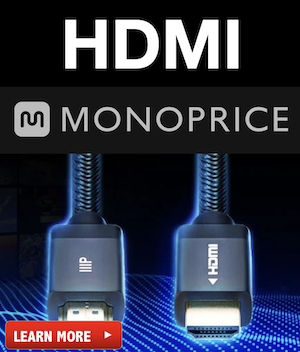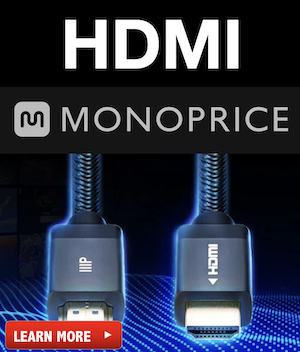AudiocRaver
Loved and Remembered Emeritus Reviewer
More
- Preamp, Processor or Receiver
- Onkyo TX-SR705 Receiver
- Main Amp
- Crown XLS 1502 DriveCore-2 (x2 as monoblock)
- Additional Amp
- Behringer A500 Reference Power Amplifier
- Front Speakers
- MartinLogan Electromotion ESL Electrostatic (x2)
- Center Channel Speaker
- Phantom Center
- Surround Speakers
- NSM Audio Model 5 2-Way (x2)
- Subwoofers
- JBL ES150P Powered Subwoofer (x2)
I have been looking for a digital amp that can drive my MartinLogan electrostatic speakers. A candidate must be stable into 2 ohms (more or less) with the ability to “double down” and drive greater power into low impedance loads. Full power bandwidth, low noise, low distortion, and low crosstalk at high frequencies, are also requirements, as are low noise and low distortion at low power levels. Crosstalk at frequencies above 1 kHz is rarely even mentioned in spec lists these days.
Many audio companies have embraced switching amp technology in recent years. Commonly found in subwoofers, the implication is that the technology might not yet be suitable for mid- and high-frequency use. Since most tweeters draw little power anyway, a Class A-B or Class B amp is an easy choice there. An electrostatic panel is another animal altogether, though.
Some offerings claim analog-class sound but are ridiculously expensive, and are therefore not on my radar. A few of the moderately priced brands and models have caught my attention. So, the hunt is on sfor a reasonably priced digital amp able to drive a MartinLogan electrostatic speaker to an SPL level of 95 dB RMS with uncompromising two-channel sound quality.
I have done a lot of listening and taken some measurements with the Crown Audio XLS 1502, a model in Crown’s XLS DriveCore™ 2 series, originally chosen largely on specs. I have really enjoyed it, although in comparing it to the NAD T 758 v3 surround receiver, I found the NAD (with analog amp technology) to sound cleaner. The XLS 1502 used in a vertical bi-amp arrangement (one stereo amp driving the woofer and electrostatic drivers via the speaker’s internal crossover) is a configuration that might provide a more perfect result, with more power available to each of the drivers. I have not yet given this configuration a detailed test, although initial trials have been promising.
I have purchased several low-cost chip-based digital amps that claim the ability to drive in the range of up to 25 or 50 or 100 watts cleanly, for various non-critical applications around the house (upstairs TV room, etc.). None of these has received critical listening attention yet.
The Cherry digital amps that Jeff Permanian has used for driving his JTR speakers at recent audio shows are impressive, or should I say the combination of the Cherry amps with the JTR speakers has sounded impressive. I never heard a hint of any “digital amp” sound. The JTR speakers are quite efficient, so the Cherry Amp’s ability to drive a weird impedance like an electrostatic is an unknown. The technology is proprietary. I admit I have yet to dig deeply into the available specs or evaluate in greater detail.
Mark Seaton uses ICEpower technology, from B&O, in his powered speakers, which I have auditioned numerous times and listened to in detail for review. This combination of amp and speaker technologies is simply marvelous. The ICEpower specs are more detailed than can be found for most digital amp technology, or for most amps in general, and address all my spec hot buttons. I am also looking at Hypex.
To date, ICEpower and Hypex look to me like the most interesting digital amp technologies. I hope to acquire a few DIY modules in the near future for further investigation. Then I will have to figure out a housing for them. I am not the metal worker that some audio DIYers are.
QUESTION: What experiences have AV NIRVANA members had with digital amp technology? Do you own a digital amp that you normally use and like the sound of?
Many audio companies have embraced switching amp technology in recent years. Commonly found in subwoofers, the implication is that the technology might not yet be suitable for mid- and high-frequency use. Since most tweeters draw little power anyway, a Class A-B or Class B amp is an easy choice there. An electrostatic panel is another animal altogether, though.
Some offerings claim analog-class sound but are ridiculously expensive, and are therefore not on my radar. A few of the moderately priced brands and models have caught my attention. So, the hunt is on sfor a reasonably priced digital amp able to drive a MartinLogan electrostatic speaker to an SPL level of 95 dB RMS with uncompromising two-channel sound quality.
I have done a lot of listening and taken some measurements with the Crown Audio XLS 1502, a model in Crown’s XLS DriveCore™ 2 series, originally chosen largely on specs. I have really enjoyed it, although in comparing it to the NAD T 758 v3 surround receiver, I found the NAD (with analog amp technology) to sound cleaner. The XLS 1502 used in a vertical bi-amp arrangement (one stereo amp driving the woofer and electrostatic drivers via the speaker’s internal crossover) is a configuration that might provide a more perfect result, with more power available to each of the drivers. I have not yet given this configuration a detailed test, although initial trials have been promising.
I have purchased several low-cost chip-based digital amps that claim the ability to drive in the range of up to 25 or 50 or 100 watts cleanly, for various non-critical applications around the house (upstairs TV room, etc.). None of these has received critical listening attention yet.
The Cherry digital amps that Jeff Permanian has used for driving his JTR speakers at recent audio shows are impressive, or should I say the combination of the Cherry amps with the JTR speakers has sounded impressive. I never heard a hint of any “digital amp” sound. The JTR speakers are quite efficient, so the Cherry Amp’s ability to drive a weird impedance like an electrostatic is an unknown. The technology is proprietary. I admit I have yet to dig deeply into the available specs or evaluate in greater detail.
Mark Seaton uses ICEpower technology, from B&O, in his powered speakers, which I have auditioned numerous times and listened to in detail for review. This combination of amp and speaker technologies is simply marvelous. The ICEpower specs are more detailed than can be found for most digital amp technology, or for most amps in general, and address all my spec hot buttons. I am also looking at Hypex.
To date, ICEpower and Hypex look to me like the most interesting digital amp technologies. I hope to acquire a few DIY modules in the near future for further investigation. Then I will have to figure out a housing for them. I am not the metal worker that some audio DIYers are.
QUESTION: What experiences have AV NIRVANA members had with digital amp technology? Do you own a digital amp that you normally use and like the sound of?










